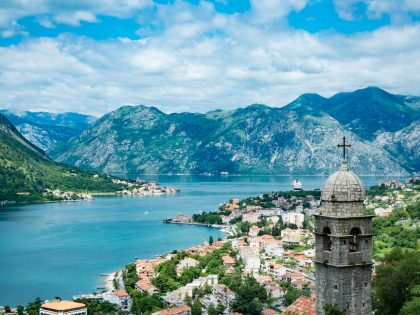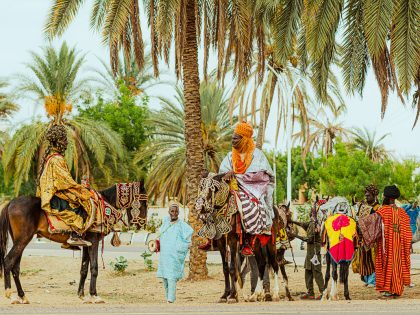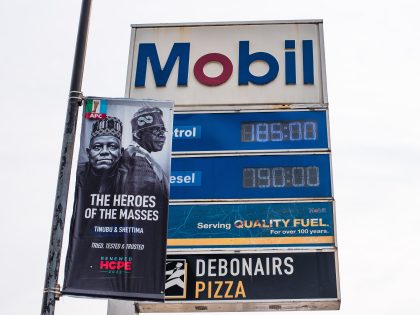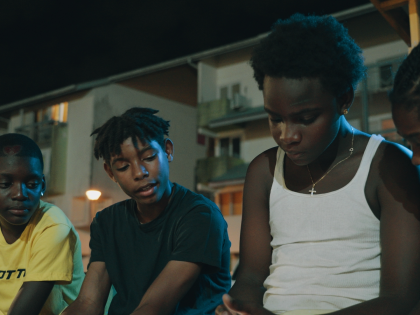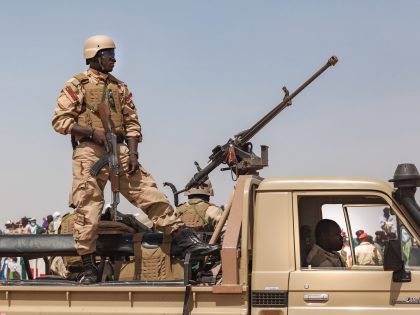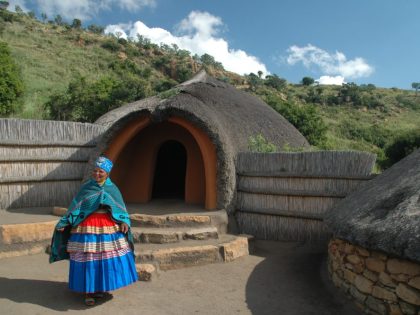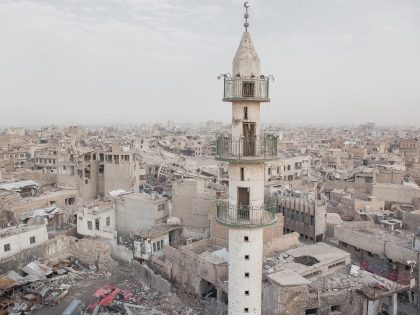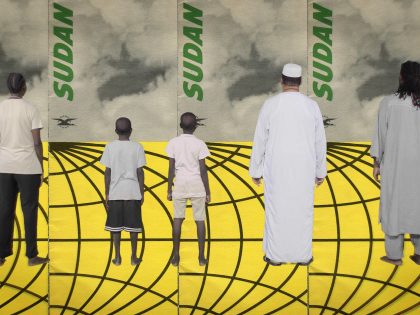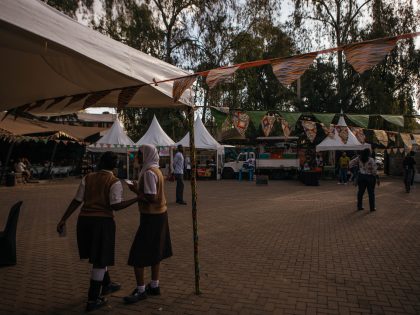Dark Princess
If mainstream fashion showcases won’t open its doors to the “others” and black fashion showcases aren’t willing to show the breadth of silhouettes, then there is much more at stake than not having a dark-hued covergirl.

Iman in 1996 (Wiki Commons).
Five years ago, Vogue Magazine asked to no one and to everyone in particular, “Is Fashion Racist?” Everyone was asked because it was an earnest question. Yet, it was for no one, truly, because according to a recent International Herald Tribune article (the international edition of The New York Times, which came with a striking graphic), nothing since 2008 has changed. Industry wide, 88% of all models are white, with the amount of black models down from 8% to now only 6% in one season. Casting directors and fashion houses themselves stop short of blatantly denying models of color, with even Jourdan Dunn and Joan Smalls complaining about the treatment. Thus, even the most powerful fashion magazine in the world cannot persuade the waves of taste and aesthetic makers to switch course.
Yet, with the Mercedes Benz Fashion Week in New York on the horizon, some are not taking this challenge sitting down. Former model and agency founder, Bethann Hardison, is re-initiating her “Black Girls Coalition,” a panel series dedicated to stimulating conversations about race in the industry amongst models themselves. Hardison is also spearheading a social media campaign to out specific designers who aren’t using black models.
Perhaps the most outspoken advocate for Black models (the International Herald Tribune deemed some of her comments unprintable) is Iman. The Somalian born fashion icon: “We have a president and a first lady who are black… You would think things have changed, and then you realize that they have not. In fact, things have gone backward.’’
Some black designers, already hip to the homogenous culture of the fashion industry, have begun their own thing. Adama Paris has successfully begun Dakar, Montreal, and last year’s first ever Paris Black Fashion Week. Scores of black models and iconic designers like Niger’s Alphadi poured into a venue adjacent to Paris’ Opera, determined to celebrate black beauty and fashion in their own space. Yet, even here the idea of diversity was complex.
It was a joy seeing dark, ebony skin tucked under pale and bold prints. Natural and weaved hair bobbed to throbbing house music. Yet, even here, the varied amount of silhouettes found in black communities, all communities, weren’t represented. One designer noted that she always had a European silhouette and aesthetic in mind when arranging her collections. Thus, if the mainstream fashion showcases won’t open its doors to the “others” and black fashion showcases aren’t willing to show the breadth of silhouettes to potential clients, then there is much more at stake than not having a dark-hued covergirl.
The mainstream fashion industry doesn’t want us. Even with former models like Iman incensed, the problem still partly lies within the Black fashion community as well for even here, we keep a very prim aesthetic. No curvy models, forget about overweight. No variations in height. It’s a black carbon copy of what’s keeping us out, and is also losing a potential client base, if you want to talk about business. So, it’s not just the mainstream fashion industry, of which we are a part of and help to continue this aesthetic. It’s also within our own institutions.
